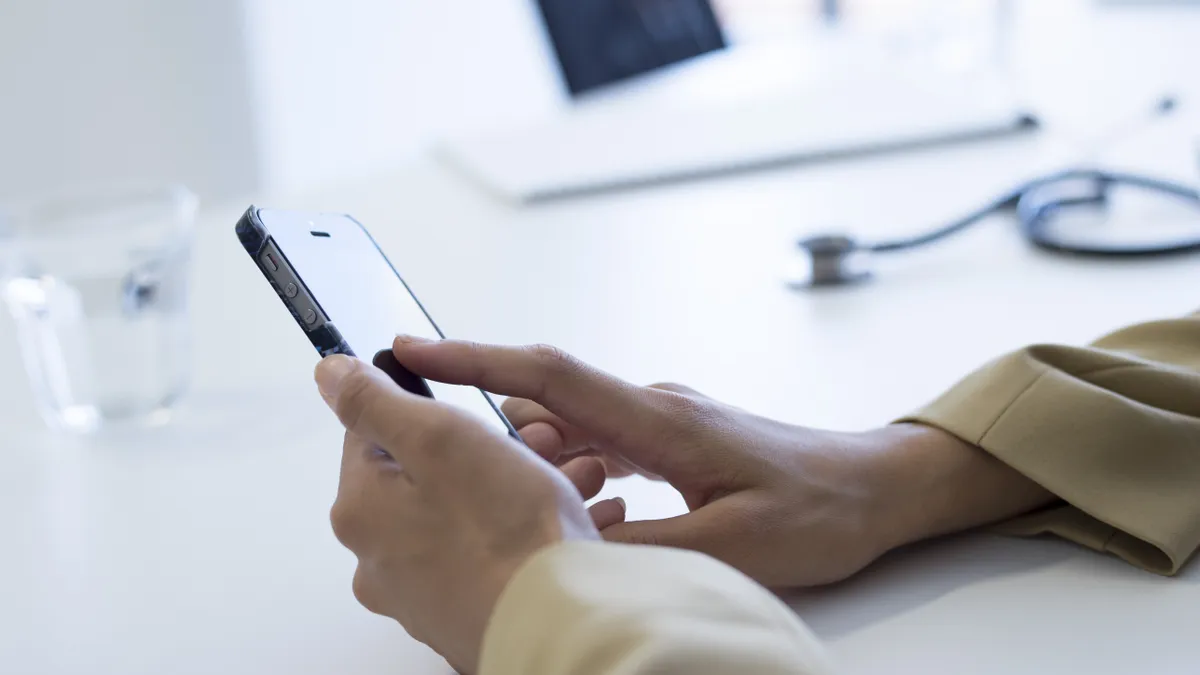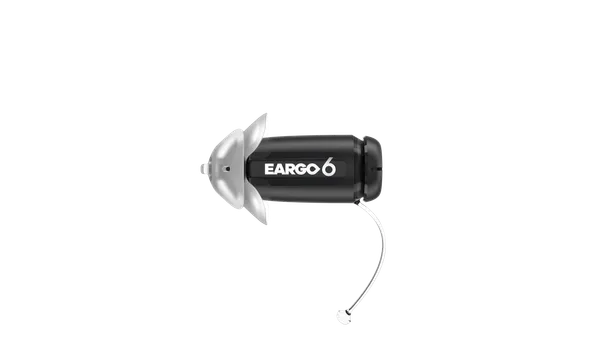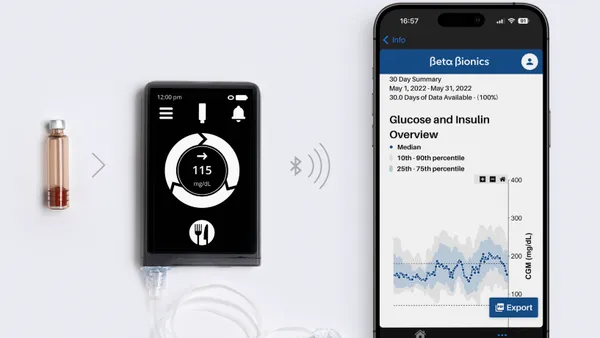Dive Brief:
- A new survey of more than 550 healthcare consumers illustrates a varied digital health market where adoption rates are just as wide-ranging as the services and products. Conducted in April by IoT firm SOTI, the survey found most patients (75%) feel care is made more convenient by mobile technologies, which include everything from scheduling apps to telehealth services.
- Consumers use mobile apps for scheduling appointments (70%), viewing lab results (52%) and requesting prescriptions (40%). Of those surveyed, 57% favored app-based communication over a phone call.
- Still, most patients (67%) prefer physician face-time inside an office over videoconferencing options. Telehealth's slow-moving adoption rate has been a frustration for payers, many of which are enthusiastic about the technology's cost-savings potential.
Dive Insight:
According to SOTI, more than half of U.S. physicians (57%) report offering patients the ability to use mobile apps to schedule appointments, access medical records and view lab results, among other services. Payers are increasingly offering telehealth benefits, which is rapidly driving up physician telehealth offerings but not quite catching on with patients.
A separate survey published by payer group America's Health Insurance Plans last month found all payers — commercial, managed Medicaid and Medicare Advantage plans alike — are challenged by low patient engagement with telehealth services.
Cybersecurity concerns are another barrier to widescale adoption of mobile health technologies. Asked about their level of concern regarding the potential for data breaches, 40% of patients involved in the SOTI survey said they are "very concerned" while 43% said they are "somewhat concerned."
And 80% of respondents said it is the responsibility of physicians to protect confidential patient information. While technology providers are not exempt from bearing responsibility for some data breaches, the majority of incidents are the result of human error.
But mobile services have potential to act as a catalyst of sorts for greater virtual care adoption, advocates say. Consumers are already comfortable with mobile applications, and the familiarity may help ease the transition from office visits to telehealth services in low-acuity settings.











